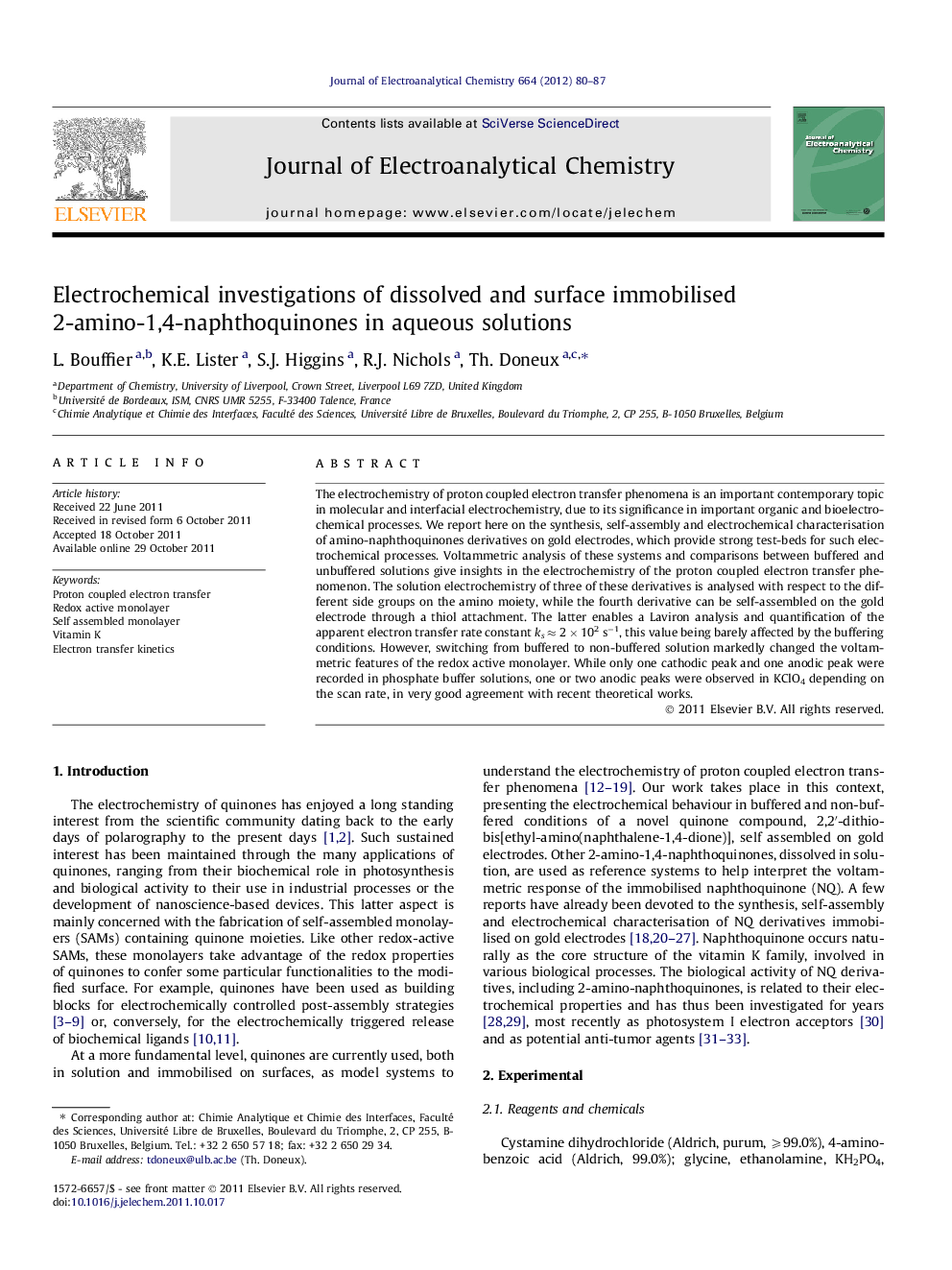| Article ID | Journal | Published Year | Pages | File Type |
|---|---|---|---|---|
| 219462 | Journal of Electroanalytical Chemistry | 2012 | 8 Pages |
The electrochemistry of proton coupled electron transfer phenomena is an important contemporary topic in molecular and interfacial electrochemistry, due to its significance in important organic and bioelectrochemical processes. We report here on the synthesis, self-assembly and electrochemical characterisation of amino-naphthoquinones derivatives on gold electrodes, which provide strong test-beds for such electrochemical processes. Voltammetric analysis of these systems and comparisons between buffered and unbuffered solutions give insights in the electrochemistry of the proton coupled electron transfer phenomenon. The solution electrochemistry of three of these derivatives is analysed with respect to the different side groups on the amino moiety, while the fourth derivative can be self-assembled on the gold electrode through a thiol attachment. The latter enables a Laviron analysis and quantification of the apparent electron transfer rate constant ks ≈ 2 × 102 s−1, this value being barely affected by the buffering conditions. However, switching from buffered to non-buffered solution markedly changed the voltammetric features of the redox active monolayer. While only one cathodic peak and one anodic peak were recorded in phosphate buffer solutions, one or two anodic peaks were observed in KClO4 depending on the scan rate, in very good agreement with recent theoretical works.
► SAM of 2-amino-1,4-naphthoquinone with a large electron transfer rate constant. ► In unbuffered solutions, one or two anodic peaks depending on the scan rate. ► The solution electrochemistry is affected by the substituent on the amino group.
